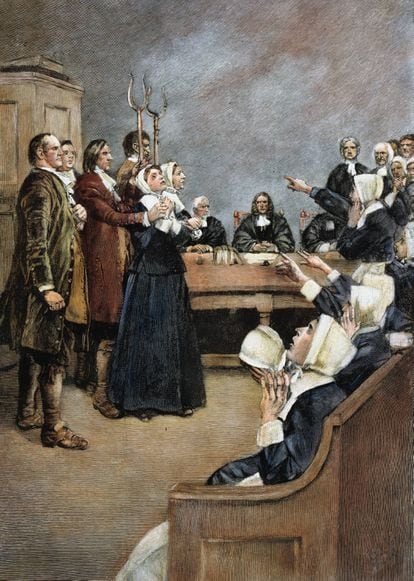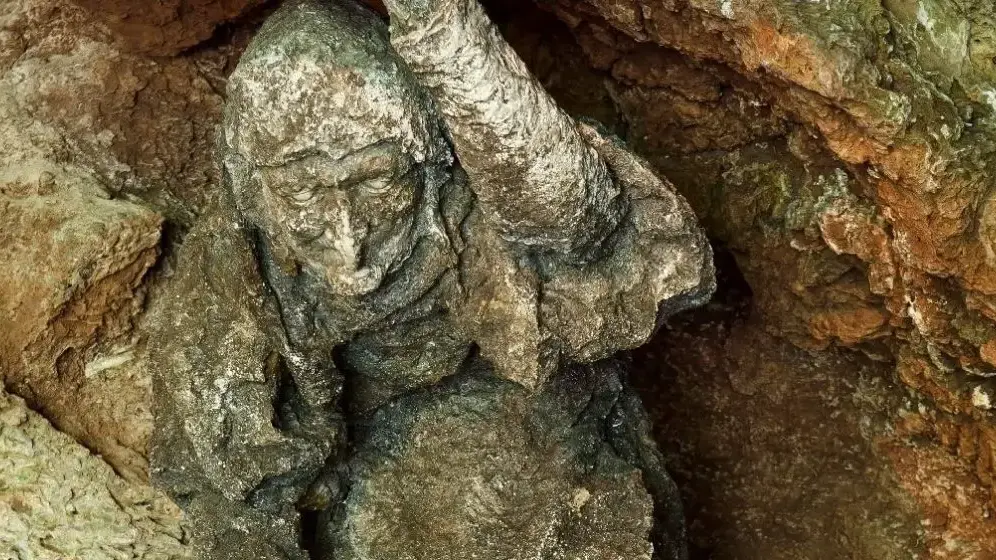As statues of slave owners and slave traders continue to fall in the United States, the embers of the bonfires that burned women accused of committing spells and witchcraft are also being extinguished.
In the umpteenth revision of history to try to exonerate the victims, the most recent episode concerns the last official Salem witch, Elizabeth Johnson Jr., from the massive 1692 and 1693 trials in the English colony of Massachusetts.
Thanks to the initiative of a middle school teacher and her de ella students in Andover, located in the same county as Salem, her spirit de ella can now roam free.
The enthusiastic students began the vindication process in 2020 and persuaded Massachusetts state senator Diana DiZoglio (D), who took up the cause and pushed for Johnson's pardon, which was announced last week.
It has taken 329 years for Elizabeth Johnson Jr.'s name to be definitively cleared.
She was the last of the Salem witches to be exonerated.
While Johnson was spared a death by hanging, she was stigmatized until she died at 77, an uncommonly long life for the time.
Historians say that Johnson showed signs of mental instability and was single and childless, all of which were signs of witchcraft during that period.
She pleaded guilty before the court of inquisitors.
Almost 30 members of her extended family of her were also implicated, as if witchcraft were contagious, hereditary, or both.
Johnson, her mother of her, several aunts and her grandfather of her, a church pastor, were tried as well.
According to historian Emerson Baker, the author of a book about the Salem witch trials, her grandfather described Ella Johnson to the judges as a “simplish person at best.”
most likely,
The fact that Johnson didn't have any descendants deprived her of anyone to vindicate her good name, as relatives of the other defendants did.
The first attempt to do so happened at the beginning of the eighteenth century.
Then, in the 1950s, Massachusetts passed a law exonerating those found guilty, but it failed to gather all the names.
A 2001 attempt at justice excluded Johnson because, after her conviction in 1693, she was formally presumed to be dead (executed).
The social hysteria against everything that deviated from the norm, against the minimal exercise of free will, was relentless against women, as Arthur Miller's play The Crucible (the playwright adapted it for the big screen in 1996) and recent variations remind us.
The theme lends itself very well to artistic creation, but in real life it amounted to opprobrium for those who suffered it and represented a cause for scorn among puritans.
Illustration of the 1692 trial of two Salem witches.
The Granger Collection.The Granger Collection / cordon press
Salem was more than a witch trial.
According to historians, it was a collective exorcism fueled by a puritanical inquisition based on paranoia and xenophobia, a gratuitous auto de fe that unleashed people's worst instincts: fear and the human tendency to blame others for one's own misfortunes.
At least 172 people were indicted in the 1692 trial.
About 35% confessed their guilt and were spared the gallows;
According to sources, around twenty insisted on claiming their innocence and did not escape that fate.
The rest of the detainees were acquitted or sentenced to prison.
The Salem witch trials represented a collective bogeyman through which one can foresee the later threat of the Ku Klux Klan.
It is hard not to wonder what bonfires would have burned today on the pyre of social media and extreme polarization.
The great Salem witch hunt can be re-read through the prism of gender.
As the adage goes, se non è vero è ben trovato (Even if it is not true, it is well conceived).
Witches, like those in Salem and the woman in Nathaniel Hawthorne's novel The Scarlet Letter (made into a film in the 1950s), were demonized for going off the rails.
The dominant society's puritanical stance against any kind of heterodoxy or freestyling, against rebels with or without a cause, led people to be targeted for dressing exotically by puritanical standards or for daring to drink at a tavern, a sacrilege for the morals of the day.
It's not difficult to draw a straight line from the bonnet of a witch on the gallows to the handmaid's white bonnet in Margaret Atwood's novel: all were women who were demonized, objectified, and escaped for deeper ills.
Beyond gender, other historians emphasize the socioeconomic dimension of the Salem witch trials, which combined a deep-seated inequality with racism, the United States' original sin since well before the Declaration of Independence.
The trials targeted colonial society's most vulnerable during a period of economic instability that unleashed fierce rivalry among Salem families.
According to historian Edward Bever, society was permeated by interpersonal conflict, much of it stemming from competition over resources.
People did whatever they could to survive, from physical aggression to threats, curses, and insults.
One of the first women accused, Sarah Osborne, was a poor widow who dared to claim her husband's land for herself, defying the customary laws of nature, which granted her inheritance to her sons.
The accusation of witchcraft ended Osborne's claim.
Tituba, an indigenous slave, was accused of being a witch because her racial origins differed from the norm.
Sarah Good was also poor, but she defended herself against the humiliations of her neighbors, which led her to the gallows;
Ella's daughter, Dorothy Dorcas Good, was Salem's youngest victim: she was arrested at only four years old and spent eight months in prison.
Since then, history has not changed the fact that vulnerable women pay the price for circumstances beyond their control.
That the Puritans of the time considered women—the evil heirs of Eve—prone to temptations such as the desire for material possessions or sexual gratification was only an added factor.
Poor, homeless, and childless, these women in the shadow of society's dominant morality were fodder for the gallows.
But Elizabeth Johnson Jr. did not just manage to save her life from her;
329 years later she recovered her honor from her as well.















